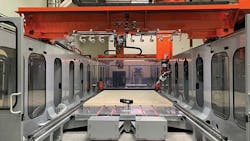Safety concerns may hold back 3D printing and additive manufacturing for aerospace and defense applications
SEATTLE – After decades of tinkering and years of major investments, aerospace and defense companies finally have found resonant missions for their 3D printing capabilities. Aviation Week reports. Continue reading original article
The Military & Aerospace Electronics take:
30 June 2020 -- The catch: It is for personal protective equipment, the face masks and gear in strong demand following the COVID-19 outbreak, not for aerospace and defense products.
Like flying cars and orbital space tourism, 3D-printed aircraft have remained a distant goal passed from generation to generation. Now, as aerospace and defense enters a new phase of post-pandemic business conditions, additive manufacturing evangelists are seeing reason for optimism and sobering reminders why manufacturing in the sector has not fundamentally changed.
What is holding back aerospace and defense is its cultural rigidity -- often a benefit in maintaining high safety levels but also a hindrance to innovation -- as well as more corporate-level issues including insufficient personnel training and challenging business cases. There also are issues in matching 3D-printing realities to aerospace and defense needs.
Related: Common technologies for manned and unmanned aircraft
Related: Contract manufacturing: there when you need it
John Keller, chief editor
Military & Aerospace Electronics
